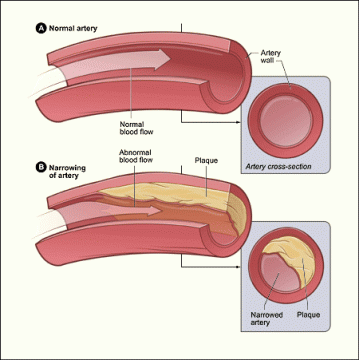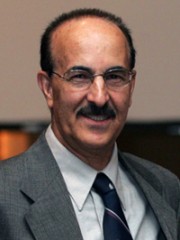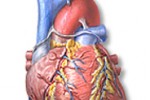Welcome back to” You Decide”,.
This Sunday March 25, 2012 at 9 PM Eastern and 6 PM Pacific time, we will continue with our new “You Decide” radio talk show featuring a wonderful guest host, the very talented actress, Ms. Lauren Watson of Sanctuary!
It must be a coping mechanism for people that most folks never assume things like heart disease will affect them. We all like to believe that it happens to other people. But heart disease is the number one killer. It is also the major cause of disability. The most common cause of heart disease is blockage of the arteries through high cholesterol. It is the main reason why people have heart attacks.
 After a considerable decline in heart disease since the 1950’s, a study in 2009 has shown that the prevalence of heart disease and its attendant risk factors — hypertension, diabetes, and obesity — are increasing in all age groups and most income groups throughout North America. The increasing prevalence of heart disease is likely because of earlier detection and better survival, as more individuals are living through a first heart attack, said researchers with Institute for Clinical Evaluative Sciences and the Peter Munk Cardiac Centre, both in Toronto. The study has uncovered a nearly 20 per cent increase in men and just over a two per cent increase in women compared with a similar study in 1994.
After a considerable decline in heart disease since the 1950’s, a study in 2009 has shown that the prevalence of heart disease and its attendant risk factors — hypertension, diabetes, and obesity — are increasing in all age groups and most income groups throughout North America. The increasing prevalence of heart disease is likely because of earlier detection and better survival, as more individuals are living through a first heart attack, said researchers with Institute for Clinical Evaluative Sciences and the Peter Munk Cardiac Centre, both in Toronto. The study has uncovered a nearly 20 per cent increase in men and just over a two per cent increase in women compared with a similar study in 1994.
Although people in lower income groups were at greatest risk, hypertension prevalence nearly doubled and obesity increased over time in all income groups. Diabetes is also increasing in almost all income groups, although the gap between the richest and the poorest is widening.
“There is great potential for more cardiovascular disease and worsening disparities in the future unless preventative efforts are directed toward these vulnerable groups,” the authors write.
Lead author Dr. Douglas Lee of the Institute for Clinical Evaluative Sciences, says projections suggest the rising prevalence of obesity in the current generation of adolescents will increase the prevalence of coronary heart disease by five to 16 per cent in

2035.
He went so far as to warn that it may also “for the first time in two centuries significantly reduce life expectancy in the 21st century.”
Nine in 10 adults (90%) have at least one risk factor for heart disease or stroke (smoking, alcohol, physical inactivity, obesity, high blood pressure, high blood cholesterol, diabetes).It is possible to have a heart attack as young as 30. Even if your only concern is high cholesterol and you are otherwise fit, you can still have a heart attack. A blocked artery is all it takes to send you to the hospital.
These are frightening statistics. It seems that our western lifestyle is killing us. Even our risk factors have risk factors.
What should we look for when it comes to symptoms? With heart disease, an individual can have the disease and not have any symptoms. However, chest pain or discomfort (angina) is the most common symptom. When the heart is not getting enough blood or oxygen the result is pain. It may feel like someone is squeezing your heart. You feel it under your breastbone (sternum), but also in your neck, arms, stomach, or upper back. The pain usually occurs with activity or emotion, or it can occur after a good night’s sleep.
Women, elderly people, and people with diabetes are more likely to have symptoms other than chest pain such as fatigue, shortness of breath or weakness.

Did a parent or grandparent die of heart disease? If so, it is a good idea to find out what caused it. If you are forty or older, you may literally have a ticking time bomb in your chest. Do not wait for your first event to seek out assistance. There are ways to determine if you are at risk. And, if so, there are treatments available. A simple blood test can determine if your cholesterol levels are not what they should be. Blood pressure can be checked at your local pharmacist or in your doctor’s office.
Most of us resist the thought that we are getting older and may be more at risk. After all, when your mind still tells you that you should be able to act like a twenty something when your body is demanding that you are actually fifty, it can be hard to accept. Busy life styles also keep us from paying attention to our bodies and the need to change our life styles. It is much easier to tell someone else to change their habits then it is for us to do the same thing. Therefore, when you have decided that making changes is the way to go, start sooner than later and work on one change at a time. Psychologists will tell you that it takes 28 days of steady effort to change a habit.
Now is the perfect time to take a look at yourself and decide to make a few changes in your lifestyle. After all, we all can use a few improvements. If you smoke, for example, now is the time to stop. If you tend to do a great deal of sitting in an office chair, resolve to become more active. Maintain a healthy weight. That means less fast food and more fruits and vegetables. Look at increasing your consumption of foods containing the healthy HDL cholesterol busters (omega-3 fatty acids) such as salmon, beans and legumes, and flax. Reduce your fat intake by consuming leaner cuts of meat and choose low fat options at the supermarket. The most important change you can make is to reduce your use of sodium (salt).
The people who are most successful at healthy aging are those individuals who pay attention to what their bodies are telling them and make changes. Two large studies from Northwestern Medicine confirm a healthy lifestyle has the biggest impact on cardiovascular health. One study shows the majority of people who adopted healthy lifestyle behaviors in young adulthood maintained a low cardiovascular risk profile in middle age. The five most important healthy behaviors are not smoking, low or no alcohol intake, weight control, physical activity and a healthy diet. The other study shows cardiovascular health is due primarily to lifestyle factors and healthy behavior, not heredity.
The studies were presented at the American Heart Association Scientific Sessions 2010 in Chicago.
 “Health behaviors can trump a lot of your genetics,” said Donald Lloyd-Jones, M.D., chair and professor of preventive medicine at Northwestern University Feinberg School of Medicine and a staff cardiologist at Northwestern Memorial Hospital. “This research shows people have control over their heart health. The earlier they start making healthy choices, the more likely they are to maintain a low-risk profile for heart disease.”
“Health behaviors can trump a lot of your genetics,” said Donald Lloyd-Jones, M.D., chair and professor of preventive medicine at Northwestern University Feinberg School of Medicine and a staff cardiologist at Northwestern Memorial Hospital. “This research shows people have control over their heart health. The earlier they start making healthy choices, the more likely they are to maintain a low-risk profile for heart disease.”
For men, if nothing else motivates you to look after your heart, consider that cardiovascular disease can be a major factor in erectile dysfunction. “Erectile dysfunction shares modifiable risks factors with atherosclerosis and coronary artery disease (CAD), including hypertension, diabetes, cigarette smoking, obesity, metabolic syndrome, and sedentary behavior. Erectile dysfunction has a high prevalence in individuals with multiple cardiovascular (CV) risk factors and is an independent predictor or CV events and may serve as the sentinel marker for CV disease (CVD),” said Bhanu P. Gupta, M.D., of the Mayo Clinic in Rochester, Minn.
For women, an apple a day, keeps cholesterol at bay. A recent study found that women who ate the fruit daily saw improvements in cholesterol levels and markers of inflammation — suggesting a lower risk of heart disease — in a year’s time.

The study, conducted by researchers at Florida State University, involved 160 women who were randomly assigned to eat about 2.7 ounces (75 g) of dried apples or prunes (dried plums) daily. Researchers did blood tests at the three-, six- and 12-month marks to measure heart-risk factors. After a year, the women who ate dried apples had lowered their total cholesterol by 14%; their levels of LDL (or “bad”) cholesterol had fallen by 23%, and their levels of HDL (or good) cholesterol had increased by about 4%. Participants also experienced a 32% decline in C-reactive protein, an indicator of inflammation in the body and a risk factor for heart disease.The women who ate prunes saw also slight reductions in these risk factors, but not to the same extent as those who ate apples, said study author and professor of nutrition Bahram H. Arjmandi. As an extra benefit, the women in apple group lost about 3.3 lbs. on average — even though the dried fruit added an extra 240 calories to their diets.
As the saying goes, you do not know what you have until it is gone. You only have one heart. Once it is damaged, it can not be replaced. Since we all expect to live longer these days, we need to look after the only pump we have.
 Thanks to Kenn for staging the video in this post for me, and thanks to you for stopping by WormholeRiders News Agency! See you all for heart health and heart charities with Lauren Watson this Sunday 6 PM PST 9 PM EST
Thanks to Kenn for staging the video in this post for me, and thanks to you for stopping by WormholeRiders News Agency! See you all for heart health and heart charities with Lauren Watson this Sunday 6 PM PST 9 PM EST
Please feel free to leave a comment here, click an icon below to share this interview, or you can visit and follow me on Twitter by clicking on my avatar to the right.
Regards,
Thank you.
ArcticGoddess1 (Patricia)
